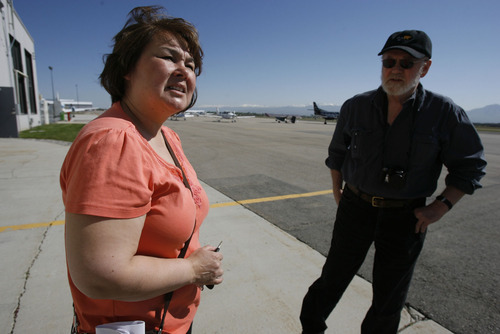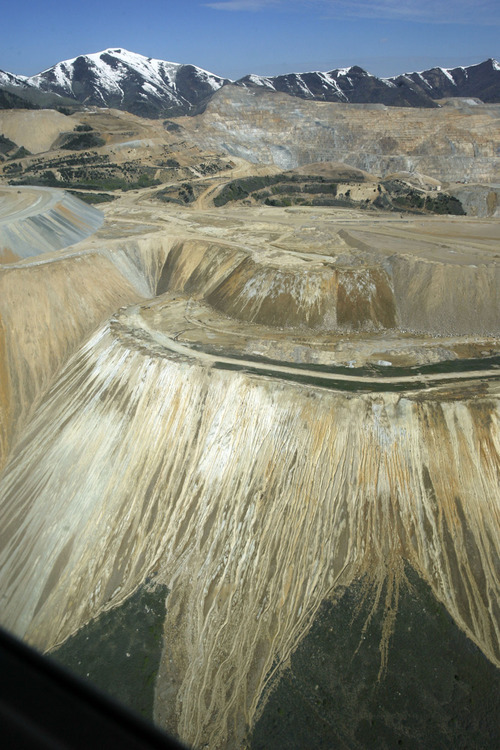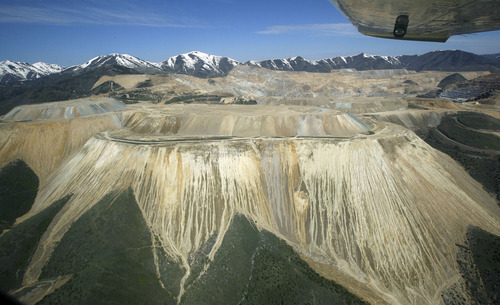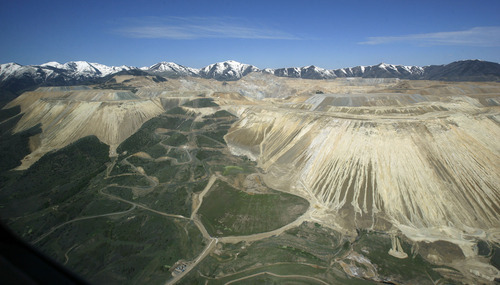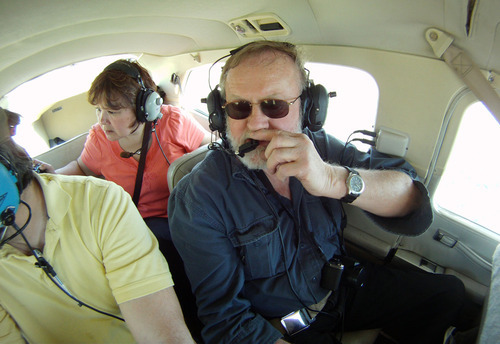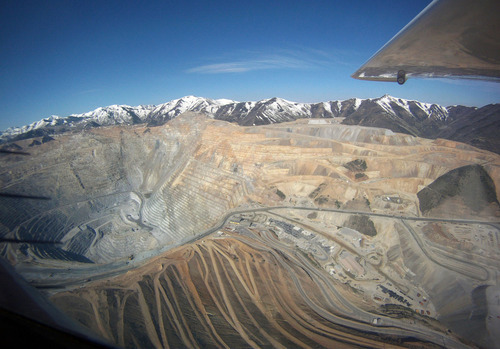This is an archived article that was published on sltrib.com in 2011, and information in the article may be outdated. It is provided only for personal research purposes and may not be reprinted.
Several Alaskans from the salmon-dependent Bristol Bay region toured Utah's Bingham Canyon Mine on Monday for a look at the kind of tourist attraction they hope never to see back home.
They came with a village association, Nunamta Aulukestai, which represents Alaska Native corporations that oppose development of the massive Pebble mineral prospect on a remote and largely roadless mountain area southwest of Anchorage. The headwaters there feed spawning grounds that support commercial and sport fisheries valued at up to half a billion dollars a year.
With funding from a conservation foundation and the Bristol Bay Native Corp., the association in recent years has sponsored several such tours, so far bringing about 50 people to view Kennecott Utah Copper's pit, three-quarters of a mile deep in the Oquirrh Mountains along the western edge of the Salt Lake Valley.
"It's friggin' huge," said Kim Williams, the association's executive director.
Williams fears Pebble, with an estimated 81 billion pounds of copper and significant gold and molybdenum deposits, could be just as large of an open-pit mine. Its placement, she said, threatens a way of life that includes subsistence fishing.
"Our kitchen is our salmon," she said, "and the caribou and the moose and the birds."
The Pebble Limited Partnership, a group of international mining corporations seeking to build the Alaska mine, disputes the threat to fisheries.
"The folks you've spoken to [with Nunamta Aulukestai] are quick to say this is a choice between fishing and mining," said Mike Heatwole, spokesman for the mining partnership. "We do not believe that."
He said Alaska regulators — who will have to consider dozens of permit applications just for the stream crossings on a proposed haul route to a Cook Inlet port — won't tolerate damage to Bristol Bay's sockeye runs.
The mining partnership has offered its own tours of Bingham Canyon to interested southwest Alaskans, plus visits to Canadian mines that operate next to salmon runs on the Fraser River. Heatwole said it's unclear how the Pebble mine might ultimately compare in size to Bingham.
Williams had toured the Kennecott pit's visitor center before, peering down at the giant trucks hauling ore and waste rock, but had never seen it from the air until Monday. She noted the urban development that laps at the mine's dry foothills offers a stark contrast to the green wilderness around Pebble.
Colorado-based nonprofit EcoFlight, a conservation group offering educational flights with environmental themes, supplied the plane and pilot for Monday's flyover, which The Salt Lake Tribune accompanied.
Ivan Weber, a former environmental official for Kennecott Utah Copper, briefed the Alaskans on groundwater contamination from the Bingham mine and fears of increased air pollution from a proposed pit expansion that would keep the Utah operation going through 2028. He isn't buying the company's assertions that its plans for a wider pit to extend operations by nine years can reduce Salt Lake Valley air pollution.
Rio Tinto, owner of Kennecott Utah Copper, holds about a one-fifth stake in the Pebble Limited Partnership, which is doing environmental groundwork before seeking state and federal permits on the Alaska mine. Nunamta Aulukestai is asking the Environmental Protection Agency to reject filling or dredging applications, thereby blocking tailings disposal.
A Pebble mine would support about 1,000 year-round jobs, Heatwole said, and workers would fly in to a work camp on rotating shifts. The average mining wage in Alaska is $90,000 a year, he said, and the partnership aims for more than half the workforce to be from around Bristol Bay.
The Utah mine expansion should reduce the company's contribution to Salt Lake Valley particulate pollution by upgrading the electrical power source from a purely coal-fired plant to one using more natural gas than coal, said Rio Tinto spokeswoman Jana Kettering. That pollution upgrade would come despite an increase in large-haul trucking and dust at the pit. The company is awaiting final permitting from the Utah Division of Air Quality.
What the Pebble proposal represents
An open-pit copper and mixed-metals mine in remote southwestern Alaska.
A partnership between Anglo-American and Northern Dynasty Minerals, into which Rio Tinto, owner of Kennecott Utah Copper, has bought about a 20 percent stake.
A potential employer of 1,000 workers, after construction.
An industrial complex in a pristine watershed that helps spawn the roughly $500 million yearly Bristol Bay commercial and sport fisheries.
A possible provider of 80.6 billion pounds of copper, 5.6 billion pounds of molybdenum, 107.4 million ounces of gold and commercially significant amounts of silver, rhenium and palladium.
Sources: Pebble Limited Partnership; Trout Unlimited





